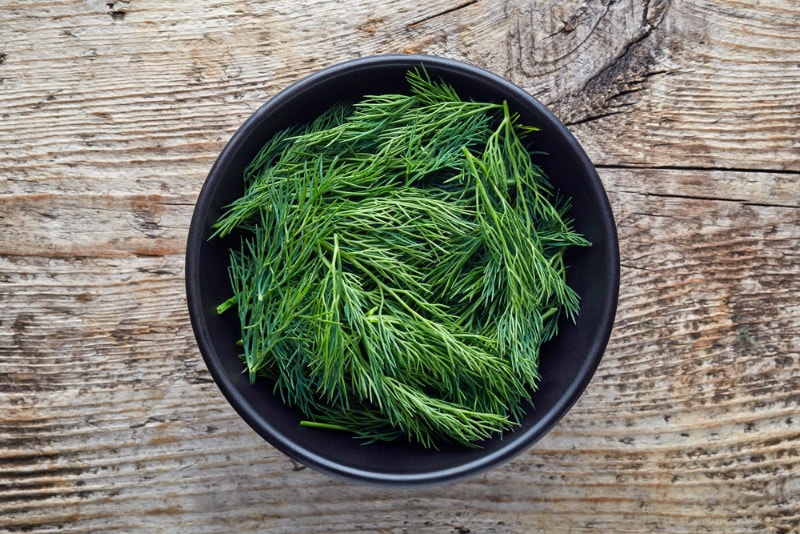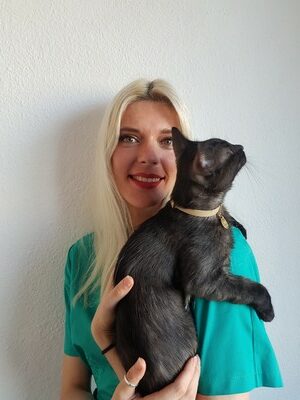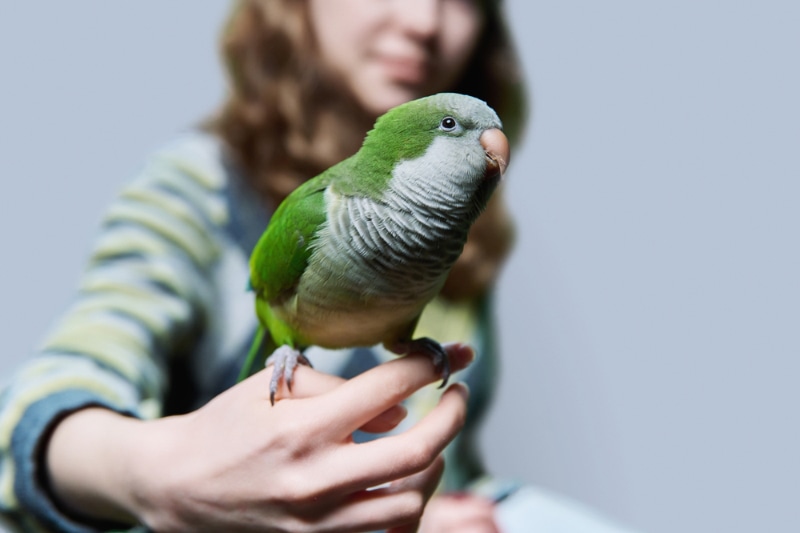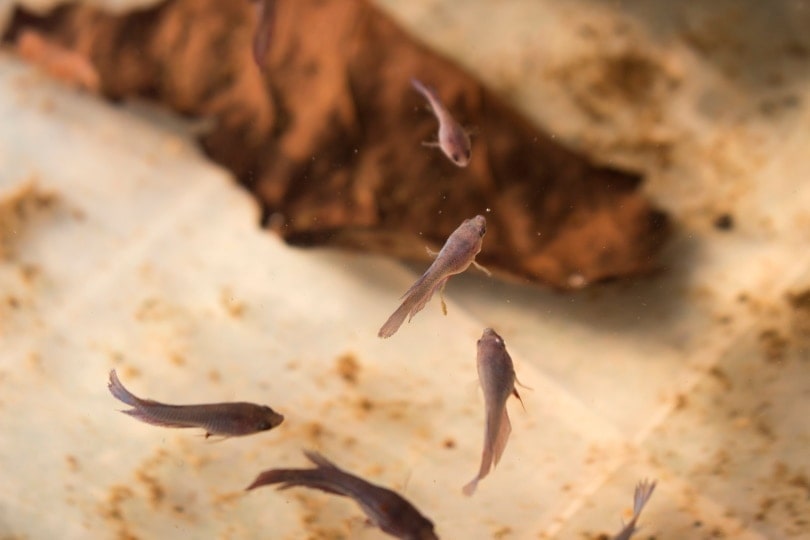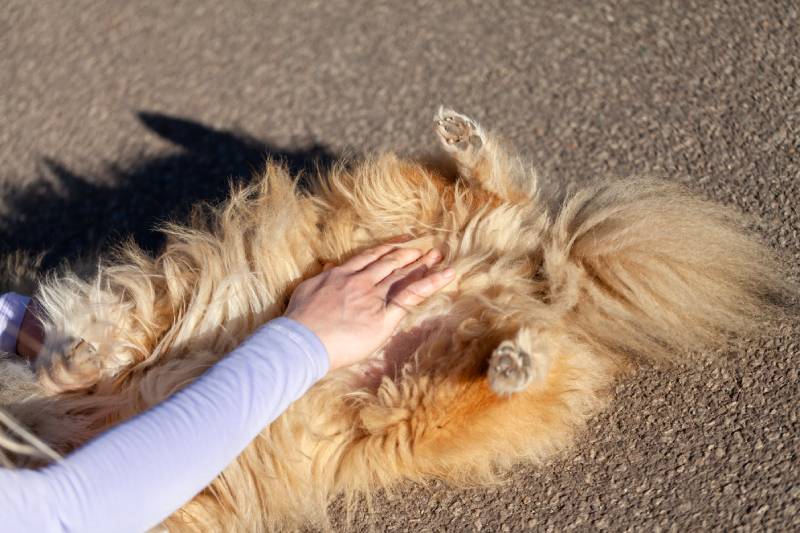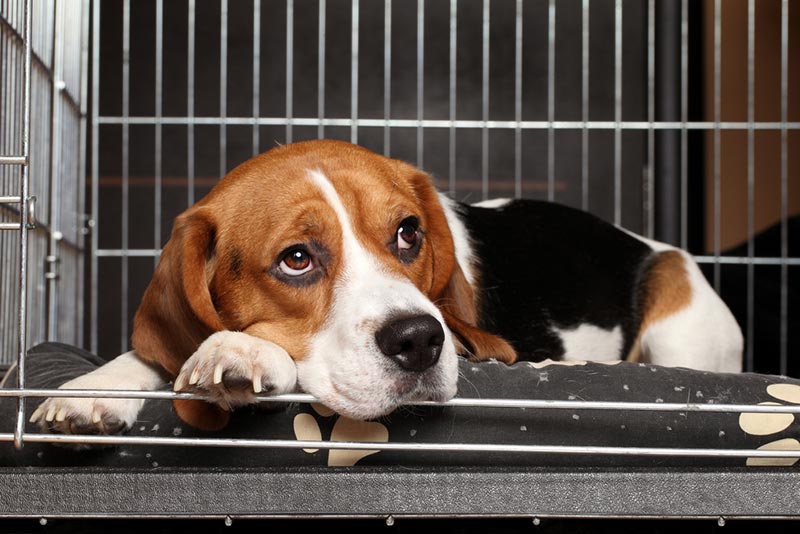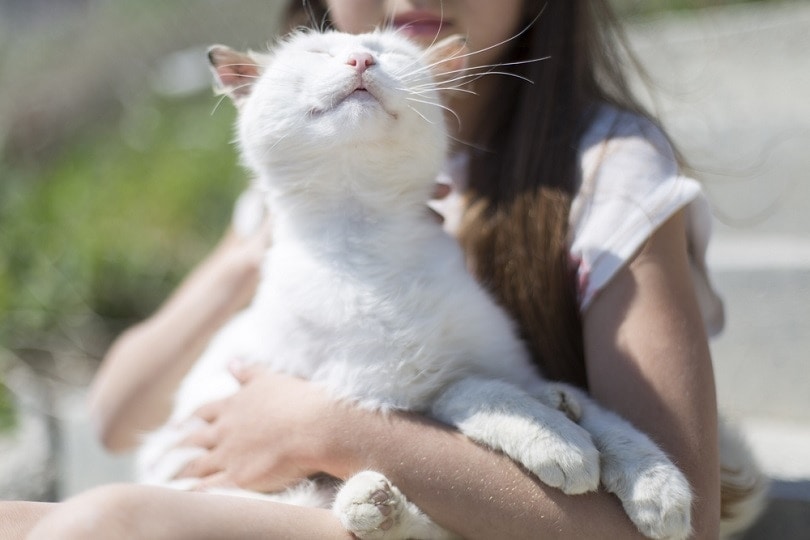My Dog Ate a Pencil! Our Vet Explains What to Do

Updated on
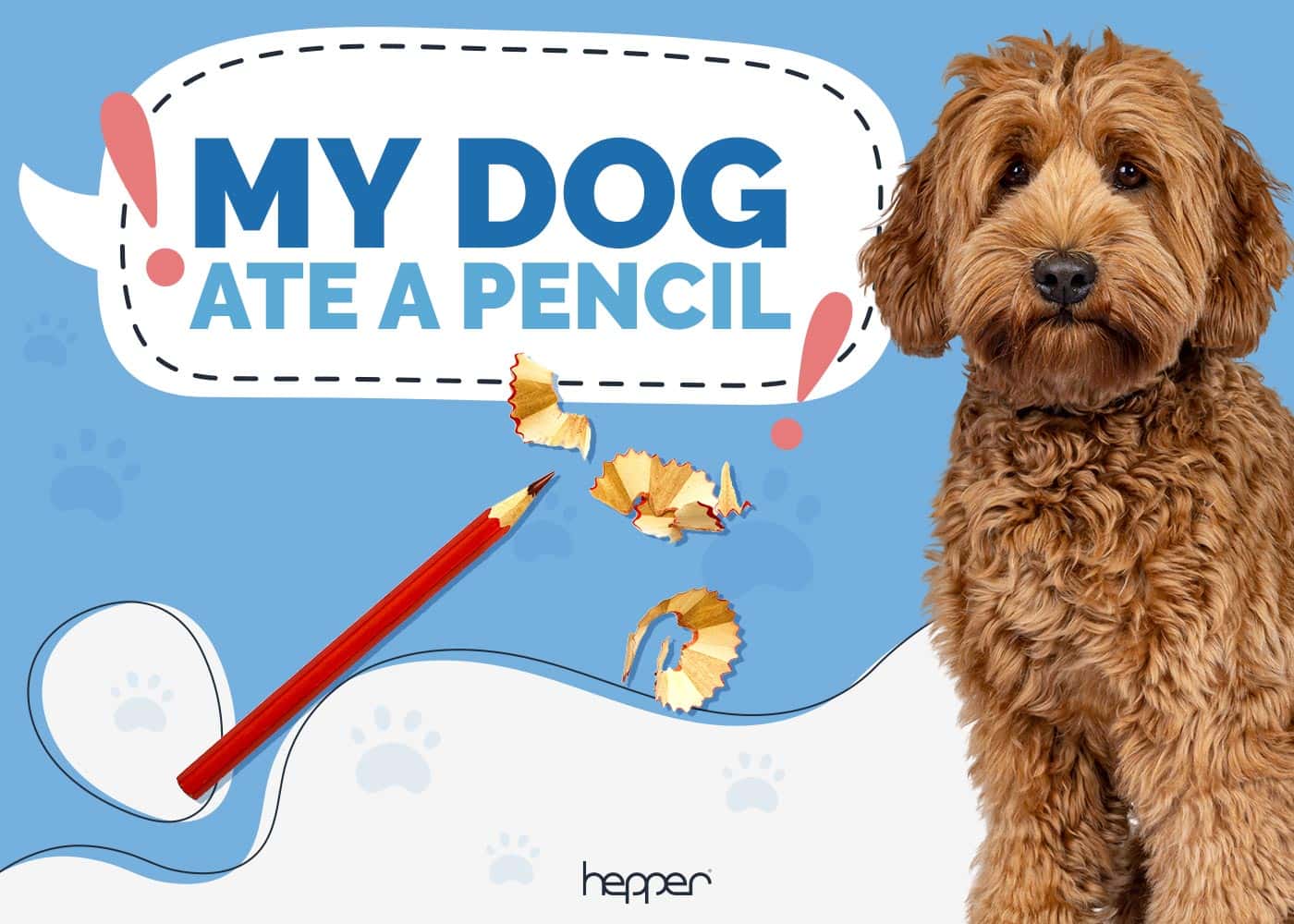
How many of us will confess to chewing on the end of a pencil whilst anxiously concentrating on an exam or dreaming up our next masterpiece? Whilst the motivation is not quite the same for dogs, who sometimes chew on strange items just for the fun of it, it still happens.
So, what happens if your dog has chewed on or eaten a pencil, and what should you do?
Is Pencil Lead Toxic to Dogs?
The short answer is no. Despite the name, the “lead” in pencils is actually made from graphite, a form of carbon that is not directly poisonous or toxic to dogs.
- The “lead” core of the pencil used for writing is made of non-toxic graphite
- A wooden shaft enclosing the pencil lead is made of softwood, such as cedar
- The ferrule (the piece of metal that attaches the eraser to the end of the pencil) is made of aluminum. Whilst aluminum can be toxic, the small amount found on the end of a pencil is unlikely to poison a dog and is more likely to cause a problem if it becomes stuck in the gut.
- The eraser on the end of the pencil is usually made of vinyl or rubber, which are non-toxic materials
- Protective non-toxic paint decorates the outside of the modern pencils we use today
- Colored pencils don’t contain graphite but instead, their writing core is wax or oil-based with pigment for color, additives, and binding agents.
Remember pencils are designed to be non-toxic as young children (and many adults) might chew on them. However, this doesn’t make them completely safe for our dogs to eat.
Why Could Pencils Be Dangerous to Your Dog?
Though pencil lead isn’t toxic, pencils can pose other risks to your dog if eaten or chewed. When your dog chews up a pencil, the wood splinters. These sharp pieces can cause injury to your dog’s mouth and to the back of the throat. In unlucky cases, pieces of wood have been known to cause deeper damage, may require surgery, and can result in infection due to the presence of foreign material.
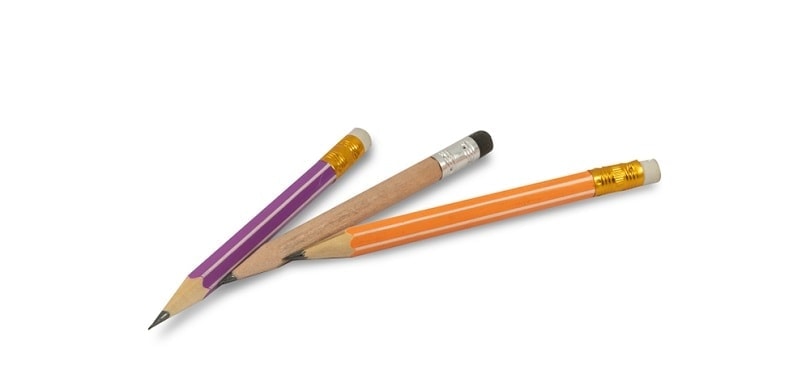
Unfortunately, once swallowed, the same risk of injury applies to the gut, as the stomach juices will not break down the inedible pieces of the pencil. In some cases, especially for larger dogs or if the pencil has been chewed up and swallowed in small pieces, the pencil will simply pass through the gut with no issues. However larger sharp pieces of pencil risk damaging the gut as they move through and can even cause perforation and associated infection (septic peritonitis), which is life-threatening.
Large pieces of pencil (including the eraser and metal ferrule), also risk getting stuck and causing a blockage in the gut, especially in smaller dogs (intestinal obstruction). Remember if there is any concern about your pet’s health and safety, it’s always best to seek advice from a vet.
My Dog Ate a Pencil What Should I Do?
So, what should you do if you notice your dog has eaten a pencil? Don’t panic and follow these step-by-step instructions!
1. Check your pet
If your dog is extremely flat and lethargic or in a lot of pain go straight to an emergency vet. If your dog is active and bright and does not appear to be in distress, continue to step 2. Any vomiting should be reported to a vet (see step 4) as this may be indicative of intestinal obstruction.
2. Prevent further access
Clean up any remaining pieces of pencil and any other inedible materials from the floor or anywhere your dog or other pets can reach.
3. Piece together what happened
Could your dog have chewed up or swallowed anything else? Other items of stationery such as metal staples, glue, or crayons? Did they chew up the pencil into smaller pieces before swallowing? How much of the pencil is missing? The more information you can give your vet, the better.
4. Call the vet if your dog is at risk
- Has swallowed more than just a very small piece of pencil
- Is a puppy or small breed
- Has eaten anything else such as pens, glue, or staples
- Is bleeding from the mouth, seems painful around the head, or is having difficulty eating
- Is vomiting, lethargic, has diarrhea, or appears to be unwell in any way
You need to speak to a veterinarian. Make sure to give them as much information as you can including your dog’s breed, age, and size, as well as details of any unusual behavior and how much of the pencil you think was eaten. Even if you are unsure, it’s always best to seek the advice of a veterinary professional. From here your vet will give you further advice over the phone or tell you to bring your dog to the clinic.
5. Monitor your dog
If the vet tells you to “wait and see” if the pencil passes through, make sure to keep a very close eye on your dog over the next 2–3 days. You may see pieces of wood, eraser, or even metal passing through in their feces over the next few days.
Signs of a Chewed-up Pencil
If your dog has only eaten a small piece of the pencil or has chewed it up into small pieces, you might not notice too much at all. However, it’s not uncommon for your dog to have a mildly upset tummy after eating something it shouldn’t. Signs to be concerned about are vomiting (especially multiple times), loss of appetite, lethargy, and constipation. If any of these signs are present, you should contact a vet immediately as they could be indicative of intestinal obstruction. Difficulty chewing, blood from the mouth, pain around the head, or head-shy behavior is also of concern, as these signs are often associated with a penetrating injury to the mouth or throat.
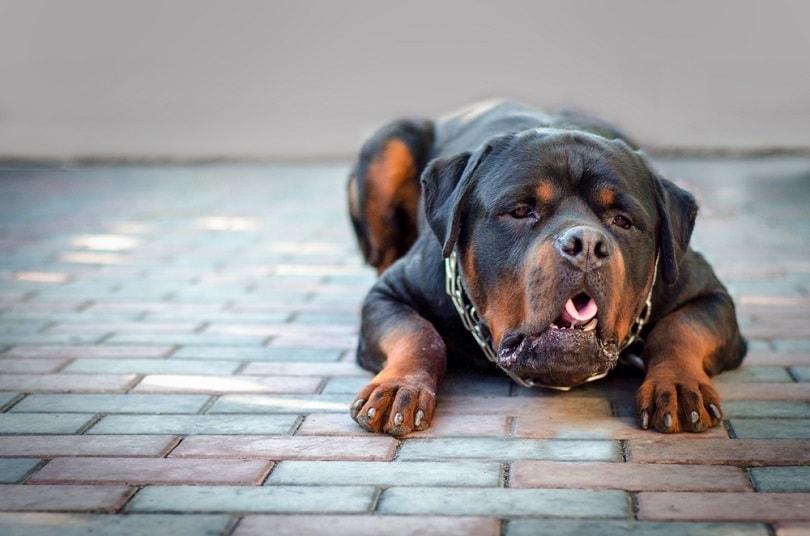
At The Vet: What Happens if a Dog Eats a Pencil?
Your vet will start by taking a thorough case history and performing a comprehensive physical examination of your dog. From here they may recommend taking a “wait and see approach” and feeding a soft, dense, wet food to help bind up any pieces of pencil, allowing them to pass more easily through the gut. If they are concerned about an intestinal blockage or a penetrating injury to the gut or mouth, they will admit your dog to the hospital to run further tests such as x-rays, ultrasound scans, and blood tests. If there is a blockage that needs removing, surgery, or endoscopy will be performed. If they are worried about injury to the mouth or throat, your vet may sedate or anesthetize your dog to examine and treat this area further.
It is extremely important never to make your dog vomit after eating or chewing on a pencil. The sharp pieces risk injuring their esophagus and throat, causing a lot more harm than good. It is also best to wait for veterinary advice before feeding your dog, especially if they are vomiting or showing signs of an intestinal blockage, as this may make things worse.
How Can I Prevent My Dog From Chewing up and Eating Pencils?
The easiest thing to do is avoid leaving pencils, pens, or any inedible items within reach. This includes coffee tables, the edge of the couch, and anywhere your pets can access them. Make sure as well that children are closely supervised when drawing or doing arts and crafts, or even better have your pets separated in another area of the house until after clean-up time.
Conclusion
Pencils are not toxic to dogs, but sharp shards and splinters can still cause them damage. It’s best to prevent your dog from accessing pencils but, if they do, you should contact your vet and watch them carefully for any signs of distress.
See Also:
- My Dog Ate a Tampon! Here’s What to Do (Vet Answer)
- My Dog Ate a Dryer Sheet: Here’s What to Do (Our Vet Answers)
Featured Image: Pushish Images, Shutterstock



